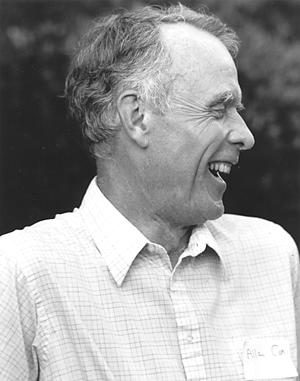Queer Scientists of the 20th CenturyMargery I. Cook (1925-2001): American virology researcher, specializing in Herpes Simplex. Her research showed direct evidence that part of the herpes simplex genome remains harbored in the trigeminal ganglia (a collection of nerves in the head/face area), allowing the latent virus to reactivate.
Neil Divine (1939-1994): American Astrophysicist, major contributor to modern theory of star formation and prediction of meteoroid and space debris environments. During his 25 years at Caltech’s Jet Propulsion Laboratory, Devine made many fundamental scientific contributions, including defining the radiation belts around Jupiter, Saturn, Neptune, and Uranus, and the dust environment around Halley and other cometary targets. During his tenure at JPL, he often served as a mentor and inspiration to many younger space physicists who benefited from both his scientific incisiveness and quick wit.
Jim Pollack (d. 1994): American astrophysicist, senior space research scientist at NASA Ames Research Center. Pollack was a world-renowned expert in the study of planetary atmospheres and particulates whose work led to many advances in our understanding of the solar system. He and Carl Sagan postulated that the seasonal color variations on Mars were caused by wind storms and dust, rather than plant life. He specialized in evolutionary climate change of terrestrial planets, and evolution of the giant gas planets.
Clyde Wahrhaftig (1919-1994): American Geologist and Environmentalist, author of Streetcar to Subduction (a geological tour of San Francisco via bus and streetcar), and recipient of the Geological Society of America’s Kirk Bryan Award for Geomorphology. Wahrhaftig was a versatile geologist who made notable contributions to understanding the coal deposits, geology and glaciers of Alaska and the landforms, surficial deposits and bedrock geology of the Sierra Nevada and the California Coast Ranges.
Eunice M. Wood (1927-2012): American biologist and educator. Do you know of prominent LGBTQ+ engineers or scientists of the 20th century that should be included on this page? Send us a note about it. Please be sure to include your reference source. Please note that this page is for people who are no longer living. Visit 500 Queer Scientists for a visibility project for contemporary LGBTQ+ scientists and engineers. |






